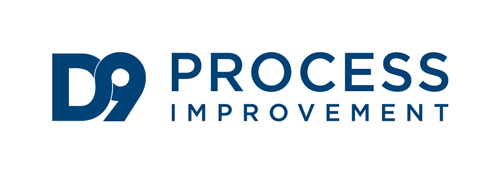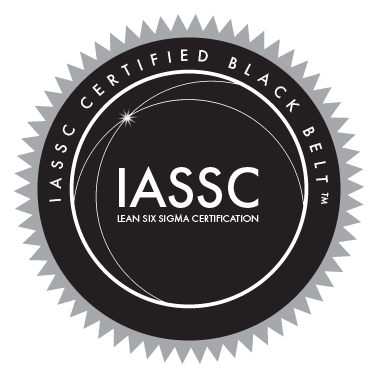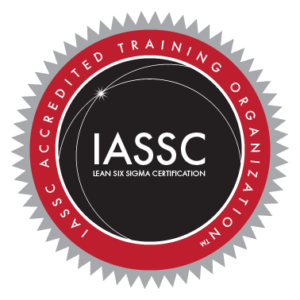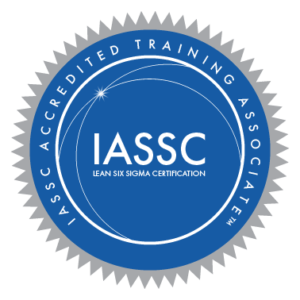Green Belt
Learn how to run a Lean Six Sigma project using the Define, Measure, Analyse, Improve, and Control (DMAIC) roadmap, and learn the individual Lean Six Sigma tools in detail (7-day training)
 Certification:
Certification:
To become a certified Green Belt each student will need to complete these three steps;
- Attend the training
- Complete an online exam (80% pass rate)
- Complete a Lean Six Sigma project
What to Expect
Lean Six Sigma combines the speed and simplicity of Lean with the statistical predictability of Six Sigma to create solutions for better business practices and dramatic bottom line results.
With Lean, the student will learn how to apply Single Piece Flow, Cellular Manufacturing, Kanbans, and 5S, Visual Controls, Error Proofing and Quick Change-overs to reduce cycle times and speed up production without reducing quality standards. Lean will focus on the removal of non-value added steps to simplify the process.
With Six Sigma, students learn how to make data driven decisions by using applied statistics. Over 35 tools are taught to allow students to gain process knowledge to make their processes Better, Faster, Lower Cost, and Safer. They will deploy these tools through a project using the Define, Measure, Analyse, Improve, and Control (DMAIC) roadmap. The Six Sigma tools strive to reduce process variance, measure the process, and find optimal settings in a pursuit of perfection.
Focus on using the Lean Six Sigma Tools to ensure sustainable process improvements. We give students many proven support tools and document files to ensure proper Lean Six Sigma project execution and documentation. Fun classroom simulations give students a “hands on” exposure to the Lean Six Sigma tools and concepts. Often our clients will require a completed and approved project demonstrating $50,000 cost savings for the organisation to then certify their people
-
−
Course Outline
7 days of training include:
- Module 1 – Lean Six Sigma Fundamentals
- Module 2 – Define and Organise a Project
- Module 3 – Team Building and Project Management
- Module 4 – Mapping Your Process – Go to Gemba
- Module 5 – Basic Stats and Graphs
- Module 6 – Measurement System Analysis
- Appendix 1 – Transforming Data
- Appendix 2 – Cpk & Sigma Levels
- Module 7 – Variance Reduction
- Module 8 – Regression
- Module 9 – Hypothesis Testing
- Module 10 – Single Piece Flow
- Module 11 – Improving Flow & Pull
- Module 12 – 5S & Visual Controls
- Module 13 – The Visual Workplace
- Module 14 – Standard Work
- Module 15 – Quick Changeover
- Module 16 – Jidoka
- Module 17 – Control Charts
- Module 18 – Kaizen Events
Interested in becoming a Green Belt?
Sign up to be notified when the next class starts
Yellow Belt
 A two-day course to give you the tools and skills to lead small-scale improvement projects in your workplace using Lean Six Sigma
A two-day course to give you the tools and skills to lead small-scale improvement projects in your workplace using Lean Six Sigma
Who Should Attend?
As this is a hands-on workshop, participants will leave the course with skills they can implement immediately and understand the project methodology to run & complete a Lean Six Sigma project. Strongly relevant to managers & supervisors responsible for the results of their teams, as well as anyone connected with a process in need of improvements. Equally suitable for non-profit organisations
What to Expect
This workshop is an extension of the one-day White Belt class with a deeper dive into the Lean Six Sigma tools and techniques. You will develop the knowledge to run and complete a small-scale Lean Six Sigma project, and develop the confidence to lead a team to implement improvements
Certification:
To become a certified Yellow Belt each student will need to complete these two steps;
- Attend the training
- Complete an online exam (80% pass rate)
-
−
Course Outline
- Module 1 – Define
- What is Lean, Six Sigma and Lean Six Sigma
- Lean Six Sigma principles
- Waste categories measured in Lean
- The Importance of Variance Reduction in work processes
- How to Determine the Cost of Poor Quality
- How to establish customer driven specifications (Upper and Lower Spec Limits, Target, and Range)
- Six Sigma Classroom Simulation – Baseline
- Input-Process-Output diagram
- How to Implement a Lean program in your company
- Module 2 – Measure
- Pareto Diagram
- Process Mapping
- Process Flow diagram
- Basic Lean Six Sigma Statistics
- Concepts of Measurement System Analysis
- Process Capability with Customer Specifications
- Cause and Effect diagram
- Identify Constant and Noise variables
- Reduce Noise Variables with Standard Operating Procedures
- Six Sigma Classroom Simulation – Improve
- How to track a process with a Scorecard
- Theory of Constraints
- Module 3 – Analyse-Improve-Control
- Lean Classroom Simulation – Baseline
- 5S
- Visual Controls
- TPM
- SMED
- JIT
- Kanbans
- Poke-Yoke (Error Proofing)
- Kaizen Blitz
- Lean Classroom Simulation-Improve
- Control Plans
- Capturing Benefits
Interested in becoming a Yellow Belt?
Sign up to be notified when the next class starts
White Belt
 A one-day introduction to the tools and skills you can use to bring change and improvements to your workplace using Lean Six Sigma
A one-day introduction to the tools and skills you can use to bring change and improvements to your workplace using Lean Six Sigma
Who Should Attend?
As this is a hands-on workshop, participants will leave the course with skills they can implement immediately. Strongly relevant to business owners, sole-traders, managers responsible for the results of their teams, as well as anyone connected with a process in need of improvements. Equally suitable for non-profit organisations.
What to Expect
This workshop is a combination of both the Variance Reduction workshop and the Lean Manufacturing workshops.
The purpose of Variance Reduction is to understand the steps of improving a process and the outcome of this training is learning how to apply quality tools and simple statistics to improve process performance and increase cash flow.
The purpose of Lean Manufacturing is to learn what Lean, Six Sigma and Lean Six Sigma are, as well as how they can be used to improve your processes. You will also receive a complete understanding of the tools involved in Lean Manufacturing.
-
−
Course Outline
- What is Lean, Six Sigma and Lean Six Sigma
- Lean Six Sigma principles
- Waste categories measured in Lean
- The Importance of Variance Reduction in work processes
- How to Determine the Cost of Poor Quality
- How to establish customer driven specifications (Upper and Lower Spec Limits, Target, and Range)
- How to achieve variance reduction by using:
- Input-Process-Output diagram
- Process Flow diagram
- Cause and Effect diagram
- Identify Constant and Noise variables
- Reduce Noise Variables with Standard Operating Procedures
- How to track a process with a Scorecard
- How to Implement a Lean program in your company
- Major Tools used in Lean:
- Process Mapping
- 5S
- Visual Controls
- TPM
- SMED
- JIT
- Kanbans
- Poke-Yoke (Error Proofing)
- Kaizen Blitz
Interested in becoming a White Belt?
Sign up to be notified when the next class starts
IASSC ACCREDITATIONS
The Green Belt and Yellow Belt courses D9 offers are accredited by IASSC. The intent of having D9’s courses accredited is to allow students to earn a certification that has been endorsed and is recognisable that will enhance their value with employers
IASSC Certified Lean Six Sigma Green Belt
A Lean Six Sigma Green Belt possesses a thorough understanding of all aspects of the Lean Six Sigma Method including competence in subject matters contained within the phases of Define, Measure, Analyse, Improve and Control (DMAIC) as defined by the IASSC Lean Six Sigma Green Belt Body of Knowledge™. A Lean Six Sigma Green Belt understands how to implement, perform, interpret and apply Lean Six Sigma at a high level of proficiency.
An IASSC Certified Lean Six Sigma Green Belt™ (ICGB™) is a professional who is well versed in the core to advanced elements of Lean Six Sigma Methodology, and someone who leads improvement projects and / or serves as a team member as a part of more complex improvement projects lead by a Certified Black Belt, typically in a part-time role.
The International Association for Six Sigma Certification (IASSC) is a Professional Association dedicated to growing and enhancing the standards within the Lean Six Sigma Community. IASSC is the only independent third-party certification body within the Lean Six Sigma Industry that does not provide training, mentoring and coaching or consulting services. IASSC exclusively facilitates and delivers centralised universal Lean Six Sigma Certification Standards testing and Lean Six Sigma training program Accreditations.
D9 is an Approved Training Organisation (ATO) Accreditation Number: 01-1125, and Alan Magner is an approved trainer and recognised by IASSC as an Accredited Training Associate
This accreditation publically reflects that you have met the standards established by IASSC such that those who participate in a training program led by D9 can expect to receive an acceptable level of knowledge transfer consistent with the Lean Six Sigma belt Bodies of Knowledge as established by IASSC.



